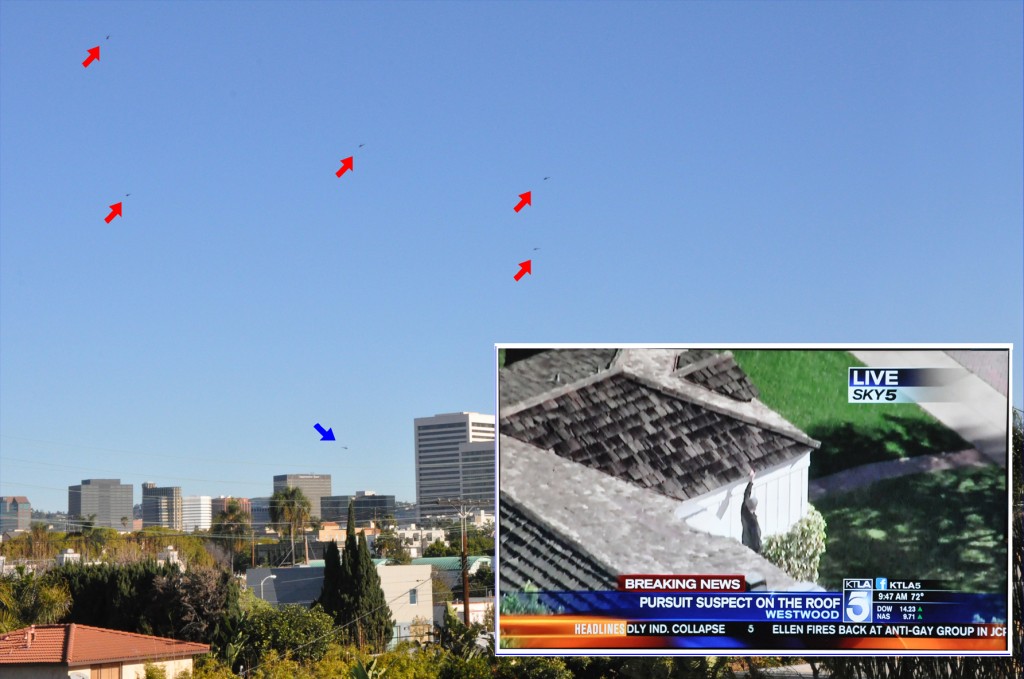On February 17, 2012, Congress passed the “Middle Class Tax Relief and Job Creation Act of 2012” (the “Act”) and sent it on to President Obama for his signature. It seems likely that the President will sign the Act.
The California Wireless Association said about the Act in an email bulletin to its members (of which I am one): “In effect, Section 6409 exempts from local discretionary review collocations and modifications that do not substantially increase the size of the tower.” Well, that’s one view, but it’s not complete, and it’s not that simple.
Let’s review….
Congress’s Election Year Gift to the Wireless Industry
As I discussed in a prior post, the Act contains the following significant gift to the wireless industry, grafted on to this Act from its former home in the stalled S.911 :
Sec. 6409. WIRELESS FACILITIES DEPLOYMENT
(a) FACILITY MODIFICATIONS.-
(1) IN GENERAL.-Notwithstanding section 704 of the Telecommunications Act of 1996 (Public Law 104-104) or any other provision of law, a State or local government may not deny, and shall approve, any eligible facilities request for a modification of an existing wireless tower or base station that does not substantially change the physical dimensions of such tower or base station.
(2) ELIGIBLE FACILITIES REQUEST.-For purposes this subsection, the term ”eligible facilities request” means any request for modification of an existing wireless tower or base station that involves –
(A) collocation of new transmission equipment;
(B) removal of transmission equipment; or
(C) replacement of transmission equipment.
(3) APPLICABILITY OF ENVIRONMENTAL LAWS.-noting in paragraph (1) shall be construed to relieve the Commission from the requirements of the National Historic Preservation Act or the National Environmental Policy Act of 1969.
Since it appears very likely that Sec. 6409 will become the law of the land, let’s take some time to dissect it for impact, defenses, and results.
What Types of Sites Are Protected by Sec. 6409?
Sec. 6409 does not on its face apply to any structures other than existing wireless towers. The Act does not even define what constitutes a “wireless tower.”
Absent some local government code definition to the contrary, a building with an existing cell site on it is not a wireless tower; a park light standard with an existing wireless cell site is not a wireless tower; a church steeple with a cell site inside it is not a wireless tower; a billboard with an existing wireless site is not a wireless tower; a mono-cross is not a wireless tower.
In reality, relatively few physical structures should be called a “wireless tower” (especially by governments).
While it’s difficult to argue that monopoles are not wireless towers, if the monopole has a light standard on it located in a parking lot, and the monopole was put in to add wireless to a prior existing light standard, then it is straight-forward to argue that the monopole with the light standard is not a wireless tower. It was a replacement for a light standard that was not a wireless tower, and the original use was preserved. Yes, this is the wireless equivalent of “Who’s on First?! Who! Who?”
Let’s turn to the Act’s coverage of a “base station” (no pun intended). The term “base station” is also not defined in the Act. Since the term can mean different things depending on which side of the planning counter you normally stand, let’s take a closer look.
If the term “base station” means equipment cabinets, and a site presently has two cabinets, then doubling the number of cabinets to four would certainly be a substantial change in the physical dimensions of the base station. If the existing “base station” is contained within a closed room or building, then doubling the number cabinets of the base station might not be a substantial change. Context is important.
Since site configurations differ from site to site, carrier-to-carrier, and location-to-location, we can’t say in knee-jerk fashion whether an expansion of 5% of 50% of a wireless tower or base station is a substantial change in the physical dimensions for the purposes of the Act. This will take a case-by-case reasoned analysis to reach a sound answer.
“Or” v. “And” Makes a Big Difference
Next, let’s look at how Sec. 6409 requires we evaluate a change in physical dimensions.
Sec. 6409(a)(1) does not say, ‘…a modification of an existing wireless tower and base station…’ Rather, it bifurcates the analysis when it says, in fact, a “…modification of an existing wireless tower or base station…” (Emphasis added). This one word change unambiguously means that if a collocation proposal comes in for an existing wireless tower, then the government should conduct a two prong analysis.
The first prong is to determine whether the proposed expansion on the wireless tower will “substantially change the physical dimensions of [the existing] wireless tower.” The second prong asks whether the proposed collocation will “substantially change the physical dimensions of the [existing] base station.”
If the answer to either prong is yes, then the collocation would fall outside of the rights and protections granted under Section 6409. That said, then the government must still consider whether the project is one that should be permitted, conditioned, or barred under the local code governing wireless site installations.
An “Eligible Facilities Request” — Not As Obvious as it Might Seem
Turning to Section 6409(a)(2), now let’s look at what constitutes an “ELIGIBLE FACILITIES REQUEST.”
The term ‘eligible facilities request’ has three distinctly separate meanings, all of which are important to governments. The first is that it means any request for modification of an existing wireless tower or base station that involves “collocation of new transmission equipment.” This seems to be the main thrust of the Act, but it is interesting that the collocation of new transmission equipment does not mean the collocation of a new carrier or carriers on an existing tower. There may be some governments that look at the plain text and say that this subsection (a)(2)(A) only applies to the existing occupant(s) on the real wireless tower who are, for themselves only, collocating new transmission equipment.
Subsection (a)(2)(B) makes it clear that an existing carrier on the wireless tower may by right remove its transmission equipment on the tower or at the base station. Governments will like this section, since it will result in a reduction in the visual impact of a wireless site.
Subsection (a)(2)(C) makes it clear that an existing carrier on the wireless tower may by right replace its existing transmission equipment. Again, size matters, if the replacement will be substantially larger or smaller compared to the existing transmission equipment.
NHPA & NEPA: Status Quo
I’m not going to spill too much e-ink over (a)(3). The status quo is maintained and the as the FCC’s duties under the National Historic Preservation Act or the National Environmental Policy Act of 1969 are reaffirmed.
Recommendations to Governments
As a government wireless planner, you are about to have gleeful carrier reps–and even more gleeful carrier attorneys–telling you that Sec. 6409 makes your job soooo much easier now: Just say ‘yes’ to every collocation and your government won’t get sued. They might even suggest that you tell the public that Congress is to blame for all this, rather than the carrier, right? Well, no, it’s not that easy for you, the carrier, or the public.
A careful, informed, rational project analysis is absolutely required to insure that governments are not granting collocations “by right” where no “by right” truly exists.
Start by looking at your wireless ordinance. (You do have one, right?) Does your ordinance contain a provision that actually defines a “wireless tower” or a “tower” or a “base station”? You are certainly going to want to review and likely tighten up those definitions to limit undesirable spillover. For example, if you define wireless tower to mean every wireless site, then your definition will need to be changed pronto!
Use a detailed wireless application form (you should be using one, anyway). Don’t blow your FCC Shot Clock deadlines because you didn’t use a detailed application, and you didn’t review the complete application at the time it hit your planning counter. Consider requiring wireless applicants to make appointments to tender applications so you’ll block enough time to review project at the counter. If the application is incomplete, make sure the applicant leaves with an incomplete letter at the time so that the shot clock doesn’t begin to run.
Sec. 6409 does not preempt a local government’s right (and some think a duty) to evaluate current and planned emissions for compliance with the FCC’s standards at 47 C.F.R. § 1.1307 et seq. and FCC OET Bulletin 65. If the the by-right collocation project won’t comply with the FCC rules–and some don’t as proposed–then don’t be bullied into permitting a non-compliant project.
Especially consider legal non-confirming wireless towers and sites (a site that was legal under local law at the time it was constructed, but would not be permissible today under current local law…think “ugly monopole”). The Act’s language would suggest that a government cannot deny a proposed collocation on a legal non-conforming site. Your government may well want to amend your local code right now to indicate that other than maintaining or replacing existing antennas with like sizes and shapes, any other material changes would be deemed to be ‘substantial’ for the purposes of collocation under the Act. I’m sure that a lot of wireless industry attorneys will disagree, but most governments tolerate legal non-confirming uses only so long as they are not exacerbated or extended in term.
Speaking of term, some states (like California) permit local government to limit the length of wireless site permits to some term of years. In California, the shortest term is normally 10 years, but modifying by expansion a legal non-confirming site would likely fall within the exception permitted in the Government Code (I helped write this section of the California Government Dode…call me…I’ll tell you more).
If you face granting a mandatory collocation on a wireless site that will term out, say, in 7 years, then you’ll want to term-limit the collocation permit to expire at the same time as the underlying site permit. This will be especially important in legal non-confirming settings.
I’m sure that some governments will use the enactment of Sec. 6409 to justify adopting a siting moratorium. It may well be justified given the potentially drastic impacts the new law will have on a major sector of wireless siting. We’ll have to wait and see.
Recommendations to the Industry
Congratulations industry, you’ve earned a well-funded victory at Congress!
Now, don’t overstate the scope of your new rights when dealing with governments.
Please don’t say that diesel generators to provide standby power are somehow “transmission equipment.” It won’t fly, and you won’t get points for creativity, either.
Don’t make hollow threats of law suits, especially over technicalities such as trying to torture and graft favorable current meanings from ordinance terms created years ago for a substantially different purpose. You’ll find enough legitimate bad-actor cases to develop case law that will rationally guide governments…and carriers…how to use the new law as a surgical tool where truly needed, rather than a blunt force instrument to inflict trauma simply for trauma’s sake.
Remember that governments may consider using your blunt force instrument threats to justify a siting moratorium for up to a year, or even longer. Is that what you really want?
Work with governments to ease into this paradigm shift. You’ll both be happier, even if the public won’t be.
Please (don’t) let the games begin.
___________________________
About the author:
Jonathan Kramer is a California-based radio frequency engineer, wireless siting advisor, and an attorney working primarily on behalf of local governments and wireless site landlords around the U.S. Jonathan notes that the opinions expressed in this article are his own, and do not necessarily reflect those of any of his clients, friends or foes. Kramer’s main website is TelecomLawFirm.com.








